
Ted Hughes and the Occult Tradition
© Ann Skea 2017.Published in the Ted Hughes Society Journal. Vol.6, Issue 1, 2017.

The use of poetry as a means of contacting and channeling hidden energies has a long history and in many cultures poets were, and sometimes still are, regarded as having special access to divine and magical energies.
When introducing some of his work in a recording made in 1978, Ted Hughes spoke of poetry as ‘a way of making things happen the way you want them to happen.’1 And he wrote in ‘Strong Feelings’ of the way in which poetry appears in anthropological literature as ‘power–charms, tools and practical agents in the business of gaining desired ends (WP 34).’
In that same 1978 recording, he went on to describe his own experience of ‘writing and rewriting’ the poem ‘Earth Numb’ (CP 541) ‘over two or three years’ until one day he seemed ‘to have got it just right’. The next day he caught a large salmon, then two days later, another two, ‘even larger’. It seemed to him, he said, that although he never thought of the poem as a ‘hunting incantation’, somehow ‘everything had to happen as in the poem’.
Yet this sort of ‘hunting magic’ was not the only way in which old poetic traditions influenced Hughes’ work. Long before he began his anthropological studies at Cambridge University, his interest in the work of W.B Yeats had introduced him to the magically inspired beliefs which Yeats expressed in works like Per Amica Silentia Lunae, The Vision and ‘The Symbolism of Poetry’. As Hughes told Ekbert Faas in 1970, ‘Yeats spellbound me for about six years. I got to him not so much through his verse as through his other interests, folklore, and magic in particular.’2 Especially in those years when he was working in Cambridge University Library after his graduation, Hughes read many of the older mystical and occult texts which Yeats himself had studied3, and books written by other members of the Hermetic Society of the Golden Dawn of which Yeats was an initiated member4. These included books on Hermetic Christian cabbala, alchemy, astrology, divination, tarot and geomancy, as well as Rosicrucian and Theosophical writings. And records held by the library demonstrate his serious interest in historically important texts which deal with astronomy and astrology5.
The Cambridge University Library is almost certainly where Hughes read some of the earliest English occult treatises written as poems by alchemists like George Ripley (1415-1490), Thomas Norton (c.1433-c.1513), and (in the seventeenth century) by Eugenius Philalethes (the name adopted by Thomas Vaughan (1621-66)) and his twin brother Henry6. Many anonymous alchemical works were also written as poems - a medium which perfectly suits the symbolic, metaphorical and imaginative language in which the spiritual and technical secrets of alchemy have been couched since its earliest appearance, reputedly in Ancient Egypt7.
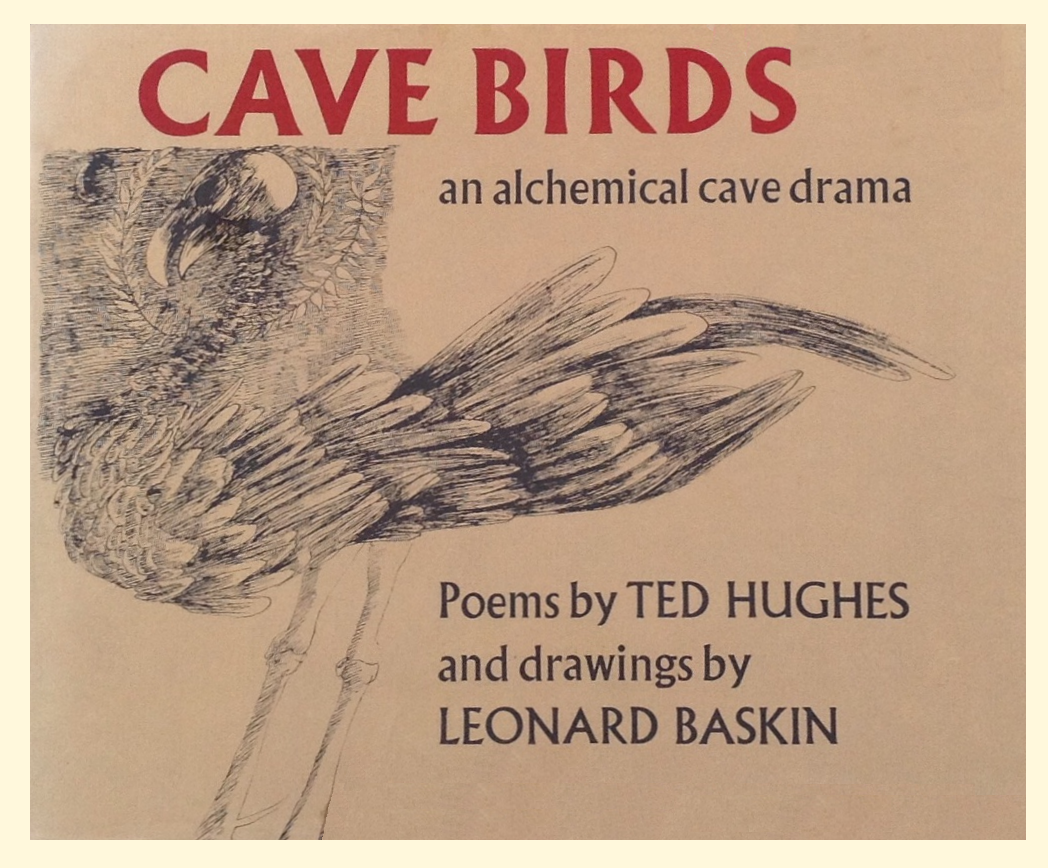
These clearly influenced Hughes’ own alchemical poem Cave Birds: An Alchemical Cave Drama, which has the same multi–layered character as these ancient alchemical poems. Beneath the surface story lies the drama of spiritual renewal; the structure of the sequence imitates the technical chemical process for making gold; and reflected in its metaphors and symbols is a description of the various stages of that purifying process8.
The fundamental principles of alchemy, however, are far broader and far older than this brief description suggests and they have been reflected in the work of poets since at least the time of Petrarch (1304-74), Dante Alighieri (1265-1321) and Geoffrey Chaucer (1343-1400). All of whom, in turn, reflected the belief in the occult powers of poetry which was common to the ancient Greek, Egyptian and Arabs worlds.
Hughes knew Chaucer’s work exceptionally well. Whilst at university, he wrote to his sister that he would get up at 6a.m. to read a Shakespeare play and ‘sometimes half–an–hour of Chaucer as well’9; he numbered Chaucer amongst those poets he once regarded as his ‘sacred canon’10; and he twice claims Chaucer as ‘Our Chaucer’ in ‘St Botolph’s’ (CP 1051–2), where he also refers to Dante. Both Chaucer and Dante were familiar with the work of Petrarch, whose work was widely known in Italy where Renaissance humanists were actively seeking out ancient knowledge.
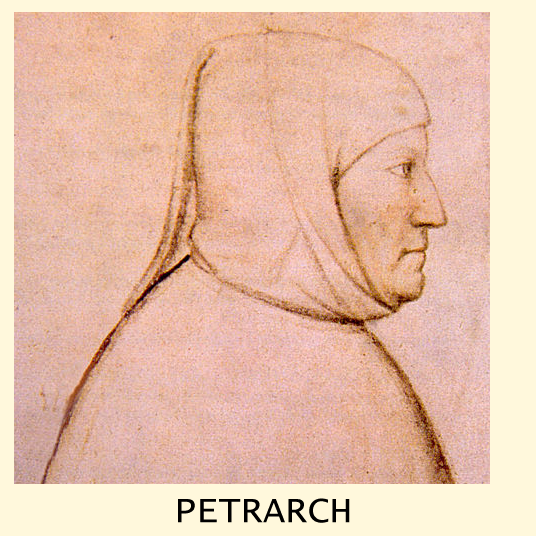
Petrarch collected and translated Greek, Roman, Hebrew and Arabic classics, including the works by Livy, Cicero, Virgil, Ovid and Homer. Through his translations of Cicero, Petrarch came to know of the work of a Roman disciple of Epicurus, Titus Lucretius Carus (c.99-55 BCE), and Lucretius’ philosophical poem De rerum natura (On the Nature of Things) was brought to Florence in 1471. There, together with other ancient texts translated at that time, it strongly influenced humanist thinking and, for centuries after, it was adopted, adapted and challenged by poets, philosophers and scientists, including, amongst poets, Ovid, Virgil, Sidney, Shakespeare, Milton and Wordsworth, as well as such figures as Thomas More, Erasmus, Spinoza and John Dee; the Cambridge Platonists; and the founders and earliest members of The Royal Society.
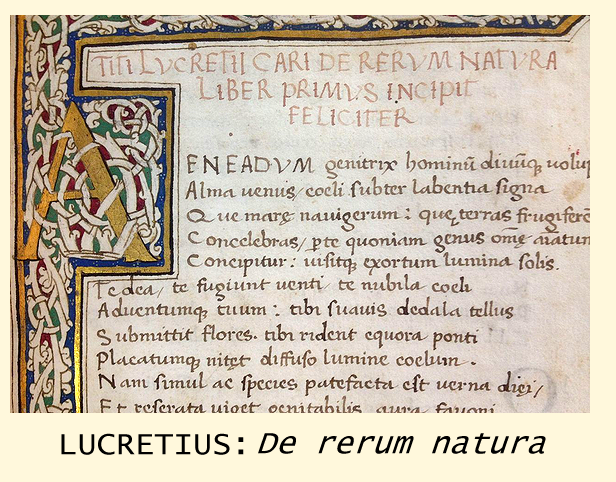
In his poem, Lucretius described not only the void, the character, motion and combination of atoms, and the infinity of the universe, but also the nature and composition of the mind and the soul, the existence and character of images and mental pictures, and the passion of love. Poets, in particular, understood his method of ‘sweetening our pauper speech’ with song and expounding dry ‘doctrine’ in ways which ‘touch it with sweet honey of the Muse.’11
He taught that all things are interwoven – that all parts influence one another; and that everything in this corporeal world decays and ends, becoming again primal germs from which, through Nature, all new things are formed. Especially, he claimed that ‘Only Nature’s aspect and her law’ can teach us. Thus, we should look with wonder on Nature.
In his Proem to Book 1, Lucretius hymns the powers of the Goddess Venus, who as the goddess of Nature ‘Guidest the Cosmos’, and he calls on her to be ‘co–partner’ in this verse wherein he intends
‘…with steady mind to cast
The purport of the skies – the Law behind
The wandering courses of the sun and moon;
To scan the powers that speed all life below;
But most to see with reasonable eyes
Of what the mind, of what the soul is made’.
Above all, Lucretius taught that human beings embody the divine energies and that we, not God or the gods or any other external authority, are responsible for our own lives. ‘The energy of the soul’, he wrote, ‘is sewn about / In all the body’ and is the agent of the will: for ‘the soul is conjoined with the mind’, and ‘no–one starts to do a thing, before / The intellect provisions what it wills’. We can, however, as Lucretius did, call on Venus’s Power of Love to aid us in our lives.
Lucretius’ reverence for Venus, Goddess of Love, and his insistence on the importance and the wonder of Nature strongly influenced Renaissance poetry and art12. And amongst the many later poets whose work was directly influenced by Lucretius’s poem were Spenser, Milton, Dryden and Tennyson, all of whom Hughes had read closely. There are copies of the works of all these poets in Hughes’ library and, in an interview with Drue Heinz in 1995, Hughes said of his early interest in poetry: ‘I used to sit in the woods muttering through my books. I read the whole of The Faerie Queen like that. All of Milton. Lots more. It became a sort of hobby-habit’13.
Milton read moral philosophy whilst at Cambridge University and translated De rerum natura. He reflected some of its teachings about body and soul in Paradise Lost. Dryden translated parts of it. And Tennyson’s poem ‘Lucretius’ satirises many of Lucretius’ beliefs and wishes on him a wife named Lucilla who, ‘when the morning flush / Of passion and the first embrace had died / Between them’, grew tired of her husband neglecting her for his work, administered a charm which gave him dreams in which all his philosophical ideas were turned against him, and, thus, ‘destroyed him’. Yeats had certainly read Dryden’s translations, since he is recorded as saying that Lucretius wrote ‘the finest description of sexual intercourse ever written.’14
Although Hughes may not have read the whole poem, he had read Dryden’s translations15. His Crow poem, ‘Lovesong’ in which the lovers grip, press, bite, mutilate and devour each other until ‘In the morning’ they ‘wore each others’ face‘, (CP 256), reflects Lucretius’ description, in Book IV, ‘The Passion of Love’, of those ‘sick–at–soul with love–pining’ who ‘cannot fix / On what to first enjoy with eyes and hands’, but
‘squeeze so tight,
And pain the creature’s body, close their teeth
Often against her lips, and smite with kiss
Mouth into mouth,’
then
‘greedily their frames they lock
powerless
To rub off aught, or penetrate or pass
With body entire into body – for oft
They seem to struggle thus to do.‘
Hughes’ own well–attested reverence for the Goddess clearly began early with his poem ‘Song’ (CP 24). And Moortown, Under the North Star, River and many individual poems reflect the wonders of Nature and demonstrate her powers over life, death and regeneration.
And Moortown, Under the North Star, River and many individual poems reflect the wonders of Nature and demonstrate her powers over life, death and regeneration.
Perhaps it is significant, too, that the poem written by Lorenzo de’ Medici (Lorenzo The Magnificent) (1449-1492) which Hughes chose to translated in 1992/3, is a sonnet which clearly states Lucretius’ teachings about the impermanence of all life. It begins: ‘How futile every hope is, that we have’, ‘We learn from our master – the Grave’. And it goes on to state that whatever sort of life we choose to lead: ‘Nothing is still. And nothing lasts. Only death.’16
Lucretius’ poem was just one of the influential texts which were collected, translated, circulated and discussed during the Italian Renaissance and which influenced all the magical and creative arts of that time, especially at the Florentine courts of Cosimo de’ Medici (1389-1464) and his grandson, Lorenzo17. Hebraic, Spanish, Arabic and Egyptian works were also widely circulated; and one, in particular, through the writing of Marsilio Ficino (1433-99) and, later, his younger contemporary and protégé Picco della Mirandola (1463-94) came to be of particular importance.
In 1463, Ficino, who was a priest, physician and scholar, was instructed by his patron, Cosimo d’ Medici, to abandon his translation of Plato’s works into Latin and begin work immediately on an almost complete Greek manuscript which containing a copy of the Corpus Hermeticum. Ficino called his translation the Pymander18 and this book became fundamental to all later studies of Hermeticism, alchemy and magic.
Hermes, like Lucretius, taught that all things are interwoven. The first of twelve statements on the Emerald Tablet attributed to Hermes is
‘In truth, certainly and without doubt, whatever is below is like that which is above.
And whatever is above is like that which is below, to accomplish the miracles of the one thing.’19

Hermeticists believe that this reciprocal dependence between the Macrocosm of the Universe and the Microcosm of our World allows divine powers to be transmitted to humans via the celestial bodies so that the Divine Spark within us may reunited us with the Creator. Astrology, talismans, magic and other sympathetic magic may be used to draw down these powers, but only a carefully prepared human body is able to receive them. As in Lucretius’s teachings, the development of human imagination and willpower is of prime importance: and the Corpus Hermeticum teaches the way in which these may be developed. Like the agency of the Goddess Venus in De rerum natura, the greatest power of Hermeticism is Love – the essence which ‘conquers everything subtle and penetrates everything solid’ and which is born of the sun and the moon, nursed by the earth, and moves between heaven and earth bringing ‘glory to the world’ and removing darkness from the human spirit20.
Most importantly, the transmission of divine powers is achieved through images created by the imagination from the memory of the Platonic Perfect Forms. The creative arts – poetry, music and art – are instrumental in this. And, although Lucretius wrote of the ‘Supreme Gods’ as careless of mankind, his description of the way in which we receive images was easily adapted by Renaissance Hermeticists to explain how such divine powers could be channelled to earth. Just as ‘tenuous images from things are sent, / From off the utmost outside of things’ and travel through the ‘ether’ to ‘batter’ our senses, so the images ‘of heavenly bodies’ are ‘carried into the intellect of man / As the announcers of their divine form.’21 Just so, for centuries, have the images of gods and religious icons, through our imagination and faith, connected us with the divine.
For Hermetic Neoplatonists, images became all important. For them, as Gombrich put it in his examination of Renaissance art, ‘the numbers and proportions of a thing preserved in the image’ impart to that image ‘something of the spiritual essence which it embodies.’22
Blake, in a later century, wrote of ‘Poetry, Painting & Music’ as ‘the three powers in Man of conversing with Paradise’23; and he ascribed to the Lucretian/Hermetic teaching that ‘All deities reside in the human breast’ and that ‘every thing that lives is Holy.’ Hughes, too, has his God in What is the Truth tell his son that ‘the Truth is that’ he is all the animals: ‘I am each of these things....And each of these things is Me.’(WIT 121)
 And for both Blake and Hughes, Ficino’s teachings about the essential power of the imagination and poetry to link us to the source of creative energies, and the Lucretian and Renaissance Humanist and Neoplatonic emphasis on our ability to control our own lives, remained of utmost importance.
And for both Blake and Hughes, Ficino’s teachings about the essential power of the imagination and poetry to link us to the source of creative energies, and the Lucretian and Renaissance Humanist and Neoplatonic emphasis on our ability to control our own lives, remained of utmost importance.
Ficino sang Orphic hymns for their connection with Pythagorean Music of the Spheres and as ritual harmonies which, he believed, could draw down the powers of the gods through the spiritus mundi, ‘which is infused throughout the universe’ and is ‘the vehicle of stellar influences.’24 And W.B. Yeats’ reference to the emergence of ‘a vast image out of the Spiritus Mundi’ in his poem ‘The Second Coming’, suggests his familiarity with Ficino’s work.
When Hughes told Drue Heinz that poetry and music have ‘medicinal’25 healing power, he too was echoing Ficino, who wrote of Plato’s claim that true music and poetry most effectively imitate celestial music; that ‘poetry expresses with fire the most profound’ and ‘prophetic’ meanings; that this fire – this ‘poetic frenzy’ – springs from a rapture inspired by the Muses; and that by the ‘burning desire’ for ‘divine beauty’ the human spirit ‘may be drawn to the heavens’. Ficino went on to define ‘four kinds of divine frenzy: love, poetry, the mysteries and prophecy.’ Love, inspired by the Goddess, was the most important.
Frances Yates (of whose books Hughes attempted to acquire ‘a definitive collection’26) examined closely the many ways in which Ficino interpreted the Corpus Hermeticum, and the shaping influence of his writings on Renaissance Hermetic Neoplatonism. She also wrote in detail of the way Pico della Mirandola, who had studied Hebrew and Arabic at university in Padua and had read widely in Hebrew Cabbalistic manuscripts, saw the connection between Hermeticism and Cabbala. If Ficino’s work made Hermes Trismegistus ‘the most important figure in the Renaissance revival of magic’, as Yates claims27, it is said that Pico ‘was the first Christian to treat knowledge of Kabbalah as valuable.’28 Both tried to present dangerously heretical teachings in ways which accorded with Christianity.
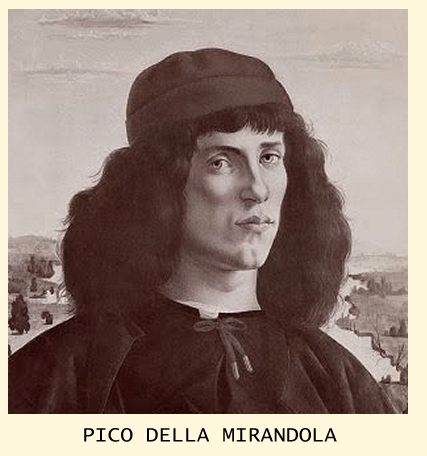
Hughes’ owned a copy of Ficino’s Book of Life, which deals, amongst many other things, with Nature as a ‘magician’; ‘the power of images and medicine’; ‘The figures of the heavens and the use of images’; the powers that draw ‘the favours of the heavenly bodies, that is the soul of the world, of the stars and of daemons’; and ‘the power of words and songs in obtaining heavenly gifts.’29 Hughes’ interest in astrology, however, began long before he owned this particular book and he would have learned much about Ficino’s and Pico’s Hermeticism, Neoplatonism and Cabbala from the writings of W.B. Yeats; from Yeats’ fellow members of the Hermetic Society of the Golden Dawn30; and from many other sources. He would certainly have read Yeats’ Per Amicia Silentia Luna, which describes the Spiritus Mundi and also seems to refer to Ficino’s teaching about divine furor when Yeats writes that ‘for the awakening, for vision, for the revelation of reality, tradition offers us a different word – ecstasy’. 31 In The Symbolism of Poetry, too, Yeats writes that ‘all sounds, all colours, all forms,… evoke indefinable and yet precise emotions’ which ‘call down among us certain disembodied powers’; and ‘a work of art, whether it be epic or song… the more powerful it is…the more powerful will be the emotion, the power, the god it calls among us’. 32 In another link with Ficino’s divine furor, he writes that: ‘the soul moves among symbols and infolds in symbols when trance, or madness or deep meditation has withdrawn it from every impulse but its own’. 33
Finally, Hughes would also have known Sir Philip Sidney’s Defense of Poesie, in which Sidney writes that poets may be inspired by the gods so that ‘whatsoever they write proceeds of a divine fury’ and that ‘the sacred mysteries of poesie’ contain occult secrets which are ‘written darkly, lest by profane wits it should be abused’34.
When Hughes expressed his own belief in the summoning power of symbols in his 1970 interview with Faas, he spoke of them as ‘invocations of elemental force, demonic force’ with the power to ‘destroy an impure nature and serve a pure one.’35 It is interesting, too, that he then went on to refer to his use of the Red Cross Knight as a controlling image in his poem, ‘Gog’. He also used this image in an unpublished fragment of his ‘lost’ play ‘The Calm’36, which suggests his understanding of the similar symbolic use of this figure in Spenser’s allegorical poem The Faerie Queene, where Spenser titles the ‘Firste book’: ‘The legend of the Knight of the Red Crosse, or of Holiness.’37
Spenser’s poem is essentially a hymn to the Goddess, and his use of numbers to structure his poetry, as in works by Chaucer and Milton, was an expression of the influence of new European learning acquired from Ancient Greek texts, in this case, from the mathematical and occult theories about harmony and number derived from Pythagoras and Plato38. Hughes seems not to have used numerology in that way, telling Drue Heinz that it was not the inflexible ordering of metrics, stanzas and rhyme which interested him but ‘a kind of deeper, hidden form’ which although it ‘doesn’t show regular metrical patterning or end rhyme, can’t in any way be called “free”’ and has a sort ‘musical inevitability’. His main argument for not often using regular metre, stanza and rhyme was that, although they could offer ‘mathematical satisfaction’ and the best examples had ‘a kind of primal force’, he wanted ‘to gain access to the huge variety of musical patterns that they shut out’.39 He did admit to Drue Heinz that the year after his first book was published he ‘wrote verses with three magical assonances to the line with the intention of abolishing certain critics.’40 And he did use numerology in numbering Rainbow Press and Gehenna Press limited editions, several of which were issued in runs limited to 101 books, a number which represents the completion of a cycle (100) and a new beginning (1) and which, by combining the digits, reduces to 11, a powerful Master number in magic and numerology. He used it, too, in the Cabbalistic numerology of ‘Adam and the Sacred Nine’, in Capriccio, Howls & Whispers and, especially, in Birthday Letters, where the 88 poems represent a complete journey around the 88 paths of the four overlapping Cabbalistic Trees of Life.41
Memory, Will, Imagination and Love are the basic principles of the occult tradition, and, together with the symbolism and precise natural rhythms associated with astrology, these skills are necessary in order to channel the divine energies into our world. Hughes trained himself rigorously in all these.
He had a remarkable memory but he also used traditional techniques to train and improve it. In a letter to Sylvia Plath on the 3rd of October 1956 he wrote of his plan to ‘get three hours of thinking in a day. Not thinking, perhaps, but remembering’, and of trying to look at the actual thing in front of [him], because ‘As soon as I begin imagining the thing happening in my world, everything becomes right’ (LTH 51–2). He taught his children memory techniques and in a letter to Frieda and Nicholas in 1971 he instructed them to ‘practise making memory lists’, and promised them a shilling for each list they could recite ‘both forward and backward without mistake’ when he met them the following weekend (LTH 312–3). And Giordano Bruno’s teachings on Cabbala and on his memory system, both extensively examined by Frances Yates, strongly influenced Hughes. Bruno’s memory system was copied from an image system described by Cicero, Simonides and another, anonymous, Latin author, and it was taught in the early Italian universities as part of Rhetoric (one of the 7 liberal arts). 42 Hughes’ ‘Introduction’ to By Heart: 101 Poems to Remember describes essentially the same technique. In 1997, when he gave me a copy of that book he inscribed it ‘the skeleton key to the Treasure Houses’, and exhorted me to practise the memory techniques.
In his own work, Hughes experimented seriously with many occult arts and techniques of magic. The first work to be published after his alchemical Cave Birds, was the Cabbalistic Adam and the Sacred Nine.
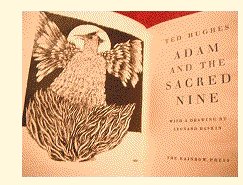 In Crow, possibly influenced by Franz Bardon’s book Initiation into Hermetics, which he read in the early 1960s and recommended and gave to friends43, he appears to have created an ‘elementary’ which expressed the Daemonic, shadow side of human nature. Bardon teaches that an elementary may be created mentally, astrally or physically but each method relies on the creation of an image which is then charged with spirit by ‘the power of the imagination’. It should be given ‘Will, Intelligence, Sentience and Consciousness’; life is then breathed into it and ‘any further work then becomes a matter of the imagination.’44 Gaudete, which was begun in 1964 but did not achieve its published form until 1977, is a shamanic, Bacchic, Dionysian creation which ends with hymns to the Goddess inspired by sacred Southern Indian hymns to Siva45.
In Crow, possibly influenced by Franz Bardon’s book Initiation into Hermetics, which he read in the early 1960s and recommended and gave to friends43, he appears to have created an ‘elementary’ which expressed the Daemonic, shadow side of human nature. Bardon teaches that an elementary may be created mentally, astrally or physically but each method relies on the creation of an image which is then charged with spirit by ‘the power of the imagination’. It should be given ‘Will, Intelligence, Sentience and Consciousness’; life is then breathed into it and ‘any further work then becomes a matter of the imagination.’44 Gaudete, which was begun in 1964 but did not achieve its published form until 1977, is a shamanic, Bacchic, Dionysian creation which ends with hymns to the Goddess inspired by sacred Southern Indian hymns to Siva45.
In 1982, for the birth of HRH Prince William, Hughes wrote The Zodiac in the Shape of a Crown, an astrological poem based on the Prince’s birth chart, in which the chief planetary gods each pronounce their blessing46. And the cross-shaped poem he created for the letter S in David Hockney’s Alphabet was almost certainly crafted for occult purposes47.
In all of these, and throughout his work, there is evidence of Hughes’ acceptance of the traditional occult beliefs in the summoning power of images and imagination. A poem, as he told young poets in Poetry in the Making, is ‘an assembly of living parts moved by a single spirit’ and he advised them to ‘imagine what you are writing about. See it and live it…Just look at it, touch it, smell it, listen to it, turn yourself into it. When you do this, the words look after themselves, like magic’ (PM 18–19). His own early hunting experiences also gave him an empathy with animals and taught him how to immerse himself in their world: skills which allowed him to create the poetic magic which is readily apparent in poems like ‘Hawk Roosting’ (THCP 68), ‘‘An Otter’ (THCP 79–80), ‘Go Fishing’ (THCP 652) ‘That Morning’ (THCP 663–4) and many others.
In Hughes’ notebooks in the British Library, there are astrological charts; pages of magical sigils and images copied from old Grimoires; and detailed notes on the ten Sephiroth of the Cabbalistic Tree, listing the magical ‘correspondences’ of each (for instance, magical image, god name, angelic order, planet, qlippoth, spiritual experience). Hughes’ extensive knowledge of the occult tradition was apparent in the ‘Note’ he wrote for his selection of Shakespeare’s verse, and it is even clearer in the pages of Shakespeare and the Goddess of Complete Being in which he discussed ‘Shakespeare and Occult Neoplatonism’ (later published separately in Winter Pollen).48 There, he describes the salient features of Hermetic Occult Neoplatonism and Cabbala and the influence of ‘the great formative figures of Giordano Bruno and John Dee’
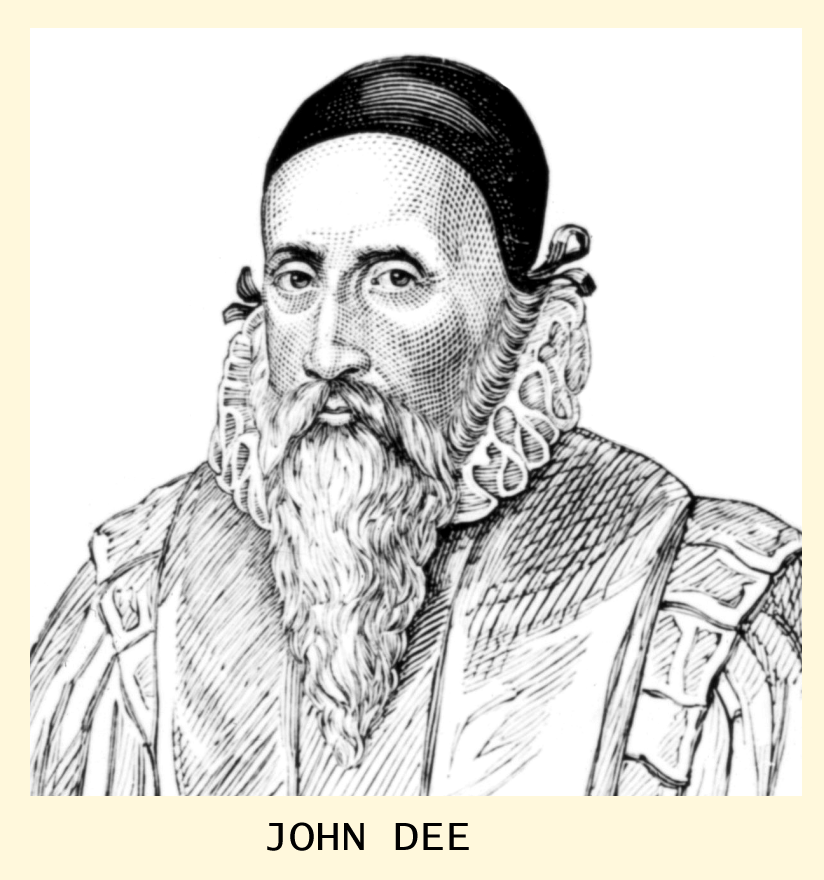 on English poets such as Sir Philip Sidney and other members of the Areopagus49; on Henry Wriothesley and ‘the group for which ‘Love’s Labours Lost’ was written’ (the so-called ‘School of the Night’)50; and, through his close connection with these poets, on Shakespeare. That Shakespeare was familiar with at least some of the work of Pico is apparent in Hamlet’s speech ‘O what a piece of work is a man’ (Hamlet, II, ii, 316), which almost paraphrases Pico’s ‘Oration on the Dignity of Man’, which itself ‘echoes throughout with the words of Magia and Cabala.’51
on English poets such as Sir Philip Sidney and other members of the Areopagus49; on Henry Wriothesley and ‘the group for which ‘Love’s Labours Lost’ was written’ (the so-called ‘School of the Night’)50; and, through his close connection with these poets, on Shakespeare. That Shakespeare was familiar with at least some of the work of Pico is apparent in Hamlet’s speech ‘O what a piece of work is a man’ (Hamlet, II, ii, 316), which almost paraphrases Pico’s ‘Oration on the Dignity of Man’, which itself ‘echoes throughout with the words of Magia and Cabala.’51
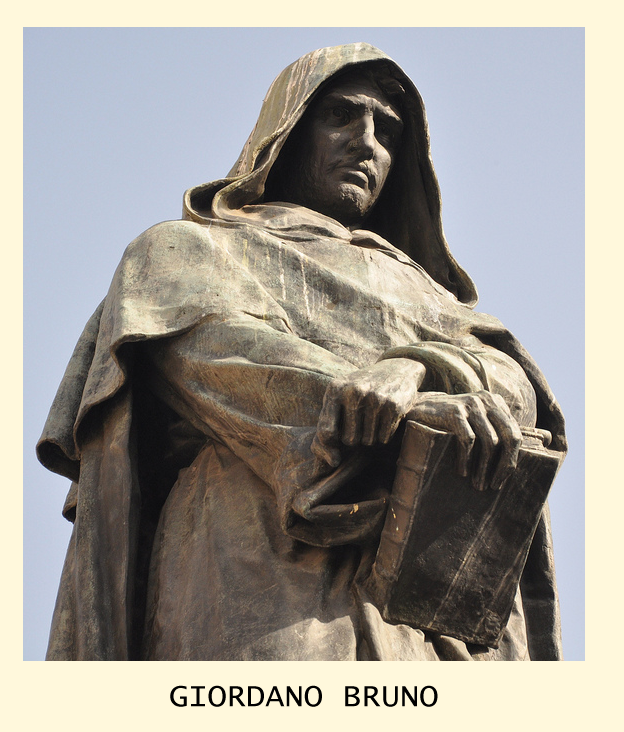
In De imaginum compositae, Bruno emphasises the primacy of the imagination in religion and magic; and he identifies the furor roused by true poetry, painting and music as the instrument for communicating with the divine and reaching the Truth52. In De gli Eroici Furori (which he dedicated to Sir Philip Sidney) he refers to the ‘mystical and cabbalistic doctrines’ found in the Canticles of Solomon as his model. And he suggests, too, the sort of spiritual summons Hughes discussed with Ekbert Faas, when he writes: ‘the ultimate design in this work to which I have been called, was to signify divine contemplation and present the eye and ear with other frenzies, not those caused by vulgar love, but those caused by heroic love.’53
The ‘operative Magi of the Renaissance’, according to Frances Yates, used music, art and poetry to draw down divine energies into our world.54 Everything Hughes had learned about magic, imagination, memory, images and Love from earlier philosophers and poets, and every skill he had learned with and alongside this knowledge, was essential to his creation of Capriccio, Birthday Letters and Howls& Whispers55. Unlike Bruno, he did choose a worldly woman to represent the Goddess. Just as Dante chose Beatrice, Sidney chose Stella, and Spenser chose Queen Elizabeth I in his Fairie Queen, Hughes chose Sylvia Plath for whom to write his ‘Canticle’. For all of these poets it was the music, the rhythms, the rituals, the acts of imagining and remembering, and the sheer magic of poetry which recaptured the ecstasy, the furor, of love and drew divine healing energy into our world. So, Birthday Letters became one more hymn to the Goddess of Love in a long, and largely occult (or hidden) poetic tradition.
REFERENCES AND NOTES
1. Ted Hughes, The Critical Forum Series (Norwich Tapes Ltd: 1978). A transcript of this tape can be found at ./CriticalForum.htm
2. Ekbert Faas, The Unaccommodated Universe (Santa Barbara U.S.A: Black Sparrow Press, 1980), p. 202.
3. Lucas Myers, The Essential Self (London: Richard Hollis, 2011), p. 13.
4. In 1885, at the age of twenty, Yeats became a founding member of the Dublin Hermetic Society, which adopted the principles of Madam Blavatsky’s Theosophical Society. He later joined the Hermetic Order of the Golden Dawn where he rose to the rank of Imperator before breaking away to found Stella Matutina.
5 ULIB 8/1/8: On 10 February 1954, Hughes consulted the influential Ephemeris by Andrea Argoli (1648) which also discusses the astronomical calculations and hypotheses of Tycho Brahe. On 16 February 1955, he consulted William Lilly’s Christian Astrology (1647): a work based on the astronomical studies of Ptolemy, Dee, Fludd, Kepler and others.
6. George Ripley, The Compound of Alchemy (1471); Thomas Norton, Ordinal of Alchemy (1477); Thomas Vaughan, Anthoposophia Theomagica (1650); Anima Magica Abscondita (1650) and Lumen de Lumin (1651); Henry Vaughan, The Chymist’s Key (1657).
7. The alchemical process of progressively refining base matter until gold is produced is not only a chemical process but also a spiritual art aimed at progressively purifying the human soul until the gold of spiritual wholeness is achieved.
8. All this is examined in detail in Ann Skea, Ted Hughes: The Poetic Quest (Armidale, Australia: University of New England Press,1994).
9. Letter to Olwyn Hughes, February, 1952, in Reid, C. Letters of Ted Hughes (London: Faber, 200), p. 12.
10. ‘At twenty–one, my sacred canon was fixed: Chaucer, Shakespeare, Marlowe, Blake, Wordsworth, Keats, Coleridge, Hopkins, Yeats, Eliot’. Interview with Drue Heinz in The Paris Review (USA: Spring 1995), ‘Ted Hughes: The Art of Poetry No.71. No.134’.
11. All quotations from the Lucretius’ De rerum natura are from the Gutenberg Ebook, (https://www.gutenberg.org).
12. E.H. Gombrich, discusses this influence in detail in Symbolic Images (London: Phaidon Press, 1972) where he examines the art of Michelangelo (1475-1564) , Leonardo da Vinci (1452-1519) and, in particular, Botticelli (1445-1510).
13. Heinz interview with Hughes, The Paris Review. p.61.
14.Stephen Greenblatt, The Swerve (New York, Norton & Co, 2011), p. 197.
15. A copy of Florio’s translation of Michel de Montaigne’s Essays in which sixteen verses of Lucretius’ poem are quoted is held in Hughes’ library at Emory University, Atlanta, USA.
16. Daniel Weissbort, Ted Hughes: Selected Translations (London: Faber, 2006), p. 100.
17. The number of ancient Greek philosophers, mathematicians, astronomers and geometricians whose work was widely known is apparent in the so–called ‘The School of Athens’ fresco painted by Raphael for the Papal Palace of the Vatican between 1509–1511. These include Aristotle, Plato, Socrates, Euclid, Plotinus, Heraclitus and Epicurus. Raphael’s fresco has the accompanying inscription, ‘Seek Knowledge of Causes’. The suggested identification of the 19 figures in this fresco can be found at: Wikipedia ‘School of Athens’.
18. Frances Yates, Giordano Bruno and the Hermetic Tradition (USA: University of Chicago Press, 1964), pp. 11-12.
19. Titus Burkhardt, Alchemy (Dorset: Element Books, 1968), p. 196. The Arabic text attributed to Gerber was translated into Latin in the Middle Ages and, as the Tabula Smaragdina, was widely distributed amongst alchemists. Isaac Newton's translation is held in Kings College Library, Cambridge.
20. Titus Burckhardt, pp. 196-7.
21. Lucretius, Book IV. ‘Existence and Character of Images’.
22. Gombrich, pp. 89-90.
23. William Blake: Poems and Prophecies (London: Dent, 1970), ‘The Marriage of Heaven and Hell’, pp. 47; 55.
24. Frances Yates, pp. 68-9; 77-8.
25. Heinz interview with Hughes, The Paris Review, p. 82
26. In 1983, Roy Davids gave Hughes a copy of Renaissance and Reform: the Italian Contribution by Frances Yates and inscribed it ‘Ted, towards your definitive collection of Frances Yates…’
27. Yates, p. 18.
28. Stamford University, Encyclopedia of Philosophy, Plato, ‘Giovanni Pico della Mirandola’.
29. Marsilio Ficino, The Book of Life, Boer, C (trans.), (Texas: Spring Publications, University of Dallas, 1980).
30. In particular, A.E.Waite, MacGregor Mathers, Aleister Crowley and Helena Blavatsky, all of whom studied and wrote about Hermetic Neoplatonism, Cabbala and other early occult philosophical teachings, and also practiced magical techniques based on these studies.
31. William Butler Yeats, Per Amica Silentia Lunas, section V, p. 30. Gutenberg , (https://www.gutenberg.org).
32. Yeats, ‘The Symbolism of Poetry’, II, p. 90. Gutenberg. The Collected Works of W.B.Yeats. Vol.6., (https://www.gutenberg.org).
33. Yeats, ‘The Symbolism of Poetry’, IV, p. 197. Gutenberg. The Collected Works of W.B.Yeats. Vol.6., (https://www.gutenberg.org).
34. Philip Sidney, Defence of Poesie, Astrophil and Stella and other writings (London: Dent, 1977), p. 113.
35. Faas, p. 199.
36. In an unpublished mss. fragment held at Smith College, two characters are discovered in a bed with an image of the Red Cross Knight on the coverlet.
37 Edmund Spencer, The Faerie Queen, Dedication and Title.Gutenberg., (https://www.gutenberg.org)
38. See Alastair Fowler’s detailed discussion of this in Spenser and the Numbers of Time (London: Routledge & Kegan Paul, 1964); and Time’s Purple Masquers (Oxford: Clarendon Press, 1966). Also, together with Christopher Butler, in Time Beguiling Sport: Number Symbolism in Shakespeare’s ‘Venus and Adonis’ published in Bloom, E. (ed.), Shakespeare 1564–1964 (Providence: Brown University Press, 1964), pp. 124–33.
39. Drue Heinz, The Paris Review, p.91–4
40. Heinz, The Paris Review, p. 68.
41. For a detailed discussion of the Cabbalistic nature of these works see Ann Skea’s Adam and the Sacred Nine: A Cabbalistic Drama ( .//AdamHome.html); and Poetry and Magic, (.//BLCabala.htm); Howls & Whispers (.//HWCabala.htm); and Capriccio (.//CapriccioHome.htm)
42. Frances Yates, The Art of Memory, Chapter 1: the three Latin sources for the classical aart of memory, (London: Pimlico, 1966). pp 17–41
43. Franz Bardon, Initiation into Hermetics (Germany: Ruggeberg, 1962). Hughes recommended this book to Daniel Weissbort, as the latter told me, and in 1968 he sent a copy to Lucas Myers with the inscription ‘To Lucas from the Crow’ (e-mail Myers to Skea 16 February 2001). He also bought Michael Baldwin a copy of The Magician, his training and work, Butler, W.E. (London: Aquarian Press, 1959), cf. Baldwin, Hughes and Shamanism (A Memoir) (.//MichaelBaldwinMemoir1.htm). And he had Butler‘s book, Magic and the Qabala (London: Aquarian Press, 1964), in his library.
44. Bardon, pp. 196-206.
45. This is discussed in detail in Ann Skea, ‘Ted Hughes’ Vacanas’, in Mark Wormald, Neil Roberts andTerry.Gifford (eds.)Ted Hughes: From Cambridge to Collected, (Hampshire: Palgave Macmillan, 2013). Also available at 'Ted Hughes' Vacanas:The Difficulties of a Bridegroom' (.//THVacanas.html).
46. Ted Hughes, ‘The Zodiac in the Shape of a Crown: What the starry heavens sang for HRH Prince William on 21 July 1982’ in George Mackay Brown, (ed.), Four Poems for St. Magnus (Orkney: Breckness Press, 1987). For a discussion of this poem, see Ann Skea, Ted Hughes and The Zodiac in the Shape of a Crown (.//Zodiacpoem.htm).
47. See Ann Skea, ‘Ted Hughes and David Hockney’s Alphabet’,Ted Hughes Society Journal, No.5. 2016.
48. Ted Hughes, A Choice of Shakespeare’s Verse (London: Faber, 1971), pp. 167–170; Shakespeare and the Goddess of Complete Being (London: Faber, 1992), pp. 19–34; Winter Pollen (London: Faber, 1994), pp. 293–309.
49. Members of the so-called ‘Areopagus’ were poets who studied classical meter and number with the goal of reforming poetry. They included Philip Sidney, Gabriel Harvey, Edmund Spenser and Edward Dyer.
50 This group included Sir Walter Raleigh, Christopher Marlowe, George Chapman and Thomas Harriot.
51. Yates, pp. 102–3. This begins ‘What a great miracle is Man, O Asclepius’.
52. Yates, pp. 335–6.
53. De Gli Eroici Furori contains love poems and dialogues which use Petrarchan conceits, accompanied by commentaries about their mystical meaning. An English translation by Paolo Eugene Memmo, Jnr. (1994) can be found at Giordano Bruno (http://esotericarchives.com/bruno/furori.htm). All quotations are from this translation.
54. Yates, pp. 104–5
55. This is examined in detail in Ann Skea’s Poetry and Magic, (.//BLCabala.htm); Howls & Whispers (.//HWCabala.htm); and Capriccio (.//CapriccioHome.htm)